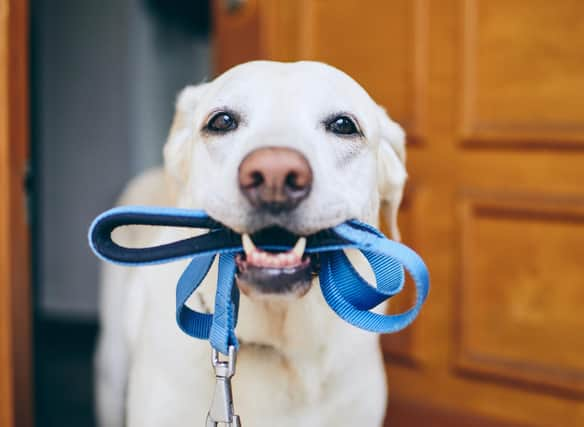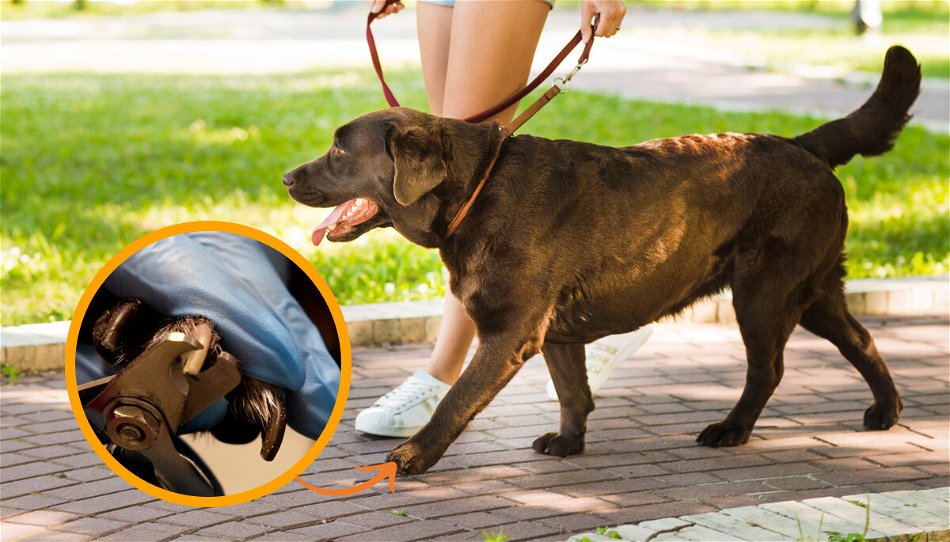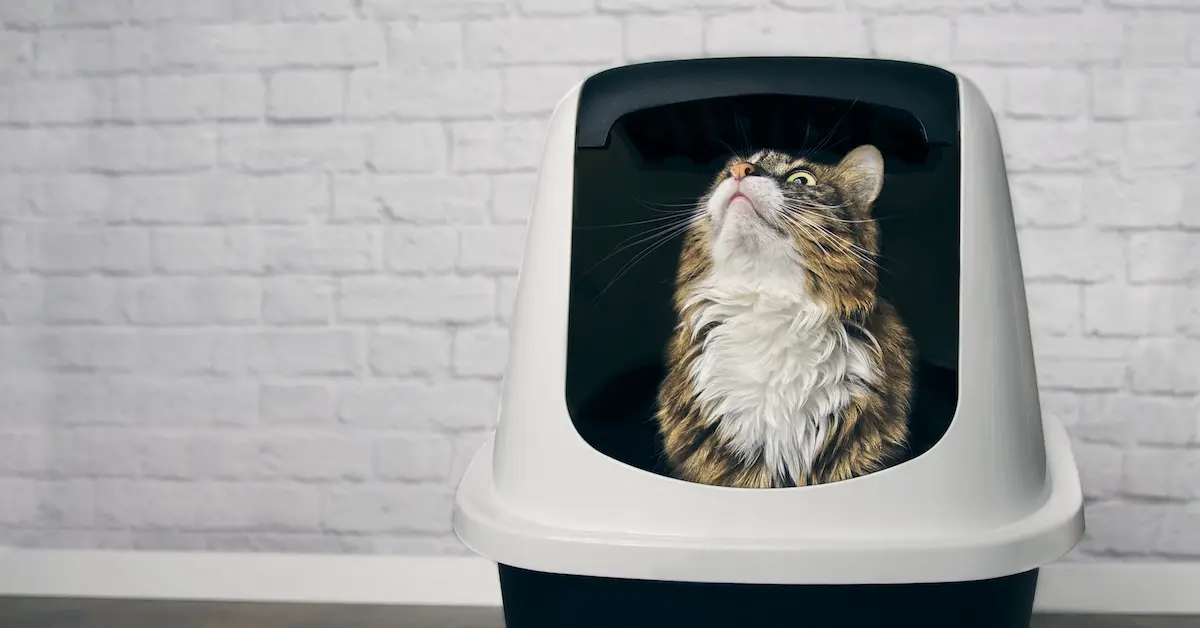If the injury is minor with minimal bleeding, you may be able to walk your dog after cutting the quick. However, if the injury is severe with profuse bleeding or a visibly upset dog, it's best to hold off on that walk.
Walking your dog is an important part of their daily routine, not only for exercise but also for mental stimulation. However, accidents happen, and sometimes while trimming your pet's nails, you may accidentally cut the quick. The quick is the sensitive part of the nail containing nerves and blood vessels that nourish the nail and support its growth.
Cutting into it can cause pain and bleeding, making it challenging to walk your furry friend. So, can you walk your dog after cutting the quick? Let's explore the answer in detail.

Credit: pawsafe.com
The Dangers of Cutting the Quick
Immediate Consequences of Cutting the Quick
An immediate consequence of cutting the quick is pain and bleeding. Dogs may yelp, withdraw, and even exhibit signs of anxiety or fear. It's crucial to remain calm and provide comfort to your pet during this distressing time.
Long-term Effects on Your Dog’s Paw Health
Repeated injuries to the quick can lead to long-term issues, such as nail deformities, chronic pain, and in some cases, infections. Ensuring proper nail care and preventing future quick cuts are essential to maintaining your dog's paw health.
First Aid for Quick Cuts
Step-by-Step Guide to Handling a Quick Cut at Home
- Stop the Bleeding: Apply pressure with a clean cloth or use a styptic powder or pencil directly on the wound.
- Clean the Area: Once the bleeding has stopped, gently clean the area with mild soap and water to prevent infection.
- Comfort Your Dog: Offer reassurance and comfort to ease their anxiety.
- Monitor the Injury: Keep an eye on the affected nail for signs of infection or unusual behavior from your dog.
When to See a Vet: Recognizing Signs of Infection
If the bleeding doesn’t stop after a few minutes, or if you notice signs of infection (such as swelling, continuous pain, or pus), consult your vet immediately. Early intervention can prevent more severe complications.
Recovery and Healing
The Healing Process: What to Expect
The quick will usually heal within a few days to a week, depending on the severity of the cut. During this time, it’s important to keep the nail clean and avoid strenuous activity that could exacerbate the injury.
Tips for Speeding Up Recovery
- Limit Activity: Avoid long walks or rough play that may put pressure on the injured paw.
- Keep the Paw Clean: Regularly check the paw for dirt or debris that could lead to infection.
- Use Protective Footwear: Consider using a protective bootie on walks to shield the injured nail from further damage.
Walking Your Dog After a Quick Cut
Can You Walk Your Dog Immediately After?
Walking your dog immediately after cutting the quick is not recommended. The pressure applied to the paw can cause further discomfort and may reopen the wound, leading to bleeding. It's best to allow time for the injury to stabilize — typically a few hours to a day, depending on the severity of the cut. If your dog seems to be in significant pain, it's wise to consult a veterinarian before resuming any physical activity.
Adjusting Your Dog’s Exercise Routine
After a quick cut, consider adjusting your dog's exercise routine to accommodate their comfort level. Opt for gentle, short walks on soft surfaces to minimize pressure on the injured paw. If your dog is limping or showing signs of pain, it's best to skip walks altogether until they're more comfortable.
Protecting the Paws Post-Injury
Footwear and Protective Gear Recommendations
To protect your dog's paws and prevent further injury, consider using dog booties or a protective paw wrap. These products can help shield the injured nail from environmental hazards and reduce the risk of infection. Ensure any protective gear fits properly and is comfortable for your dog, as ill-fitting equipment can cause additional problems.
The Role of Paw Balms and Salves in Healing
Applying a pet-safe paw balm or salve can aid in the healing process by keeping the area moisturized and protected. These products can also help soothe any irritation caused by the injury. Choose a product specifically designed for pets, and avoid any with harmful chemicals or irritants.
Nail Care Post-Injury
Trimming Nails After a Quick Cut: Dos and Don’ts
When it comes to trimming nails after a quick cut, caution is key. Allow sufficient time for the injury to heal before attempting another trim. When you do trim again, be extra cautious and only cut small amounts of the nail at a time. Using a nail file to smooth out the edges can also prevent splitting and cracking, which could exacerbate the injury.
Professional Grooming vs. At-Home Care
If you're nervous about trimming your dog's nails after a quick cut, seeking the assistance of a professional groomer or veterinarian might be the best course of action. Professionals are experienced in handling sensitive situations and can ensure the nail is trimmed without further injuring the quick. Additionally, they can provide tips for at-home care and nail maintenance.

Credit: www.scotsman.com
Preventing Future Quick Cuts
How to Properly Trim Your Dog’s Nails
Trimming your dog's nails is an essential aspect of their grooming routine. To prevent cutting the quick, start by identifying the translucent part of the nail, avoiding the pink area where the quick resides. Use sharp, specially designed dog nail clippers for a clean cut. If your dog has dark nails, trimming in small increments is key. Reward your dog after each session to create a positive experience.
Understanding Your Dog’s Nail Structure and Growth Patterns
Knowledge of your dog's nail structure and growth patterns is vital in avoiding the quick. The quick grows with the nail, so regular trimming is necessary to gradually recede the quick, making it easier to maintain nail length without injury. Familiarizing yourself with the anatomy of your dog's nails will help you understand how to trim them safely.
Exercise and Activity Alternatives
Safe Indoor Activities for Your Dog During Recovery
After a quick cut, your dog may experience discomfort that could limit their usual outdoor activities. Indoor games like hide and seek, puzzle toys, or gentle tug-of-war can keep them mentally stimulated and physically active without straining the injured nail.
Low-Impact Outdoor Activities Post-Injury
Once your dog starts to recover, engaging in low-impact outdoor activities is beneficial. Walking on soft grass, gentle play in a controlled environment, or short, leisurely walks can help maintain their physical health without putting too much pressure on the healing nail.
Monitoring and Managing Pain
Recognizing Pain in Your Dog
Dogs are adept at hiding pain. Signs your dog might be in discomfort include limping, licking the injured paw, withdrawal from play, and changes in eating habits. Early recognition of these signs is crucial for timely pain management.
Pain Management Solutions
For immediate pain relief, gently applying a cold compress can help reduce swelling and discomfort. Consulting your veterinarian is essential—they may recommend pain relief medications specifically designed for dogs. Additionally, ensuring your dog's rest and limiting their movement can aid in a quicker recovery.
Frequently Asked Questions For Can I Walk My Dog After Cutting The Quick
Can Dog Go On Walk After Quick Is Cut?
If your dog's injury after a quick cut is minor and there is only a small nick with minimal bleeding, you may be able to walk your dog with precautionary measures. However, if the injury is more severe, such as profuse bleeding or a visibly upset dog, it's best to hold off on that walk.
It depends on the severity of the injury, your dog's pain tolerance, and how you manage the situation.
How Long Does It Take For A Dog's Quick To Heal?
The healing time for a dog's quick injury depends on the severity of the injury. If there's minimal bleeding, you may be able to walk your dog with caution. But if the bleeding is profuse or if your dog is visibly upset, it's best to wait until the injury has healed.
Will My Dog Forgive Me For Cutting The Quick?
It depends on the severity of the injury. If there is only minor bleeding and the dog is not visibly upset, you may be able to walk the dog with precautions. However, if the injury is severe with profuse bleeding or the dog is distressed, it is best to hold off on walking until the wound has healed.
Your dog will forgive you, but may be wary of clippers next time.
Can Dogs Feel When You Cut Their Quick?
The quick is a sensitive part of a dog's nail, filled with nerves and blood vessels. Cutting into it can cause pain and bleeding. The severity of the injury, the dog's pain tolerance, and how you manage the situation will influence whether your dog can go on a walk after cutting the quick.
If it's a minor injury, you may be able to walk your dog with precautions, but if it's more severe, it's best to hold off on the walk until the bleeding has stopped and wound has dried.
Conclusion
While cutting the quick on your dog's nails can be a common mishap, it's important to take the necessary precautions after the incident, especially when it comes to taking your pet for a walk. The severity of the injury will determine whether it's safe to take your dog for a walk or not.
It's essential to keep the wound dry, check for any signs of pain or discomfort, and prevent any further injury. Additionally, monitoring your pet's reaction to the injury can help you determine when it's safe to resume normal activities.





One Response